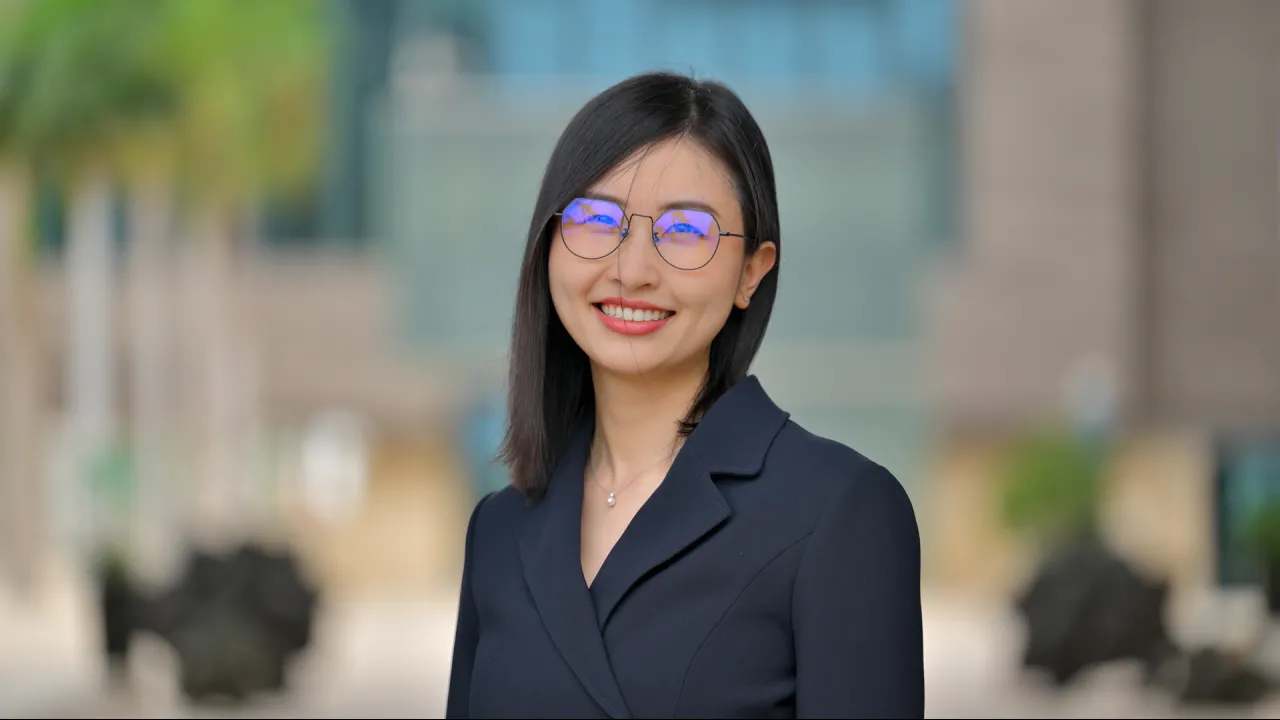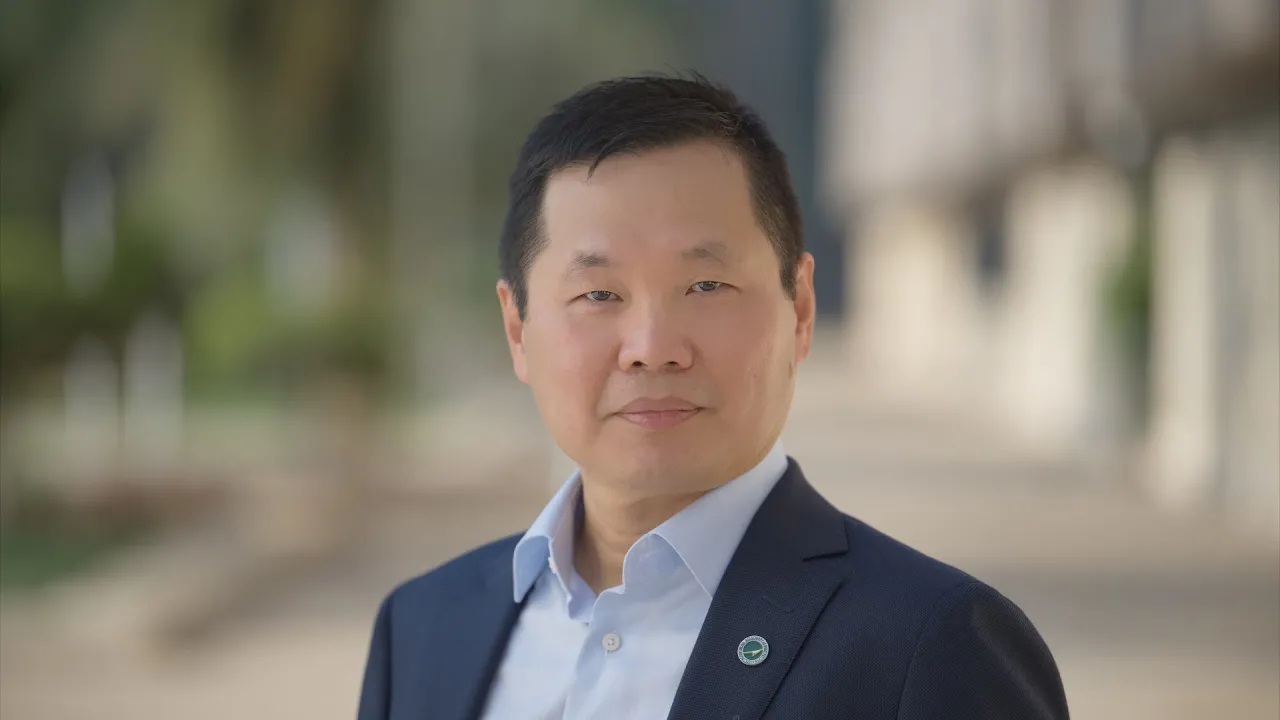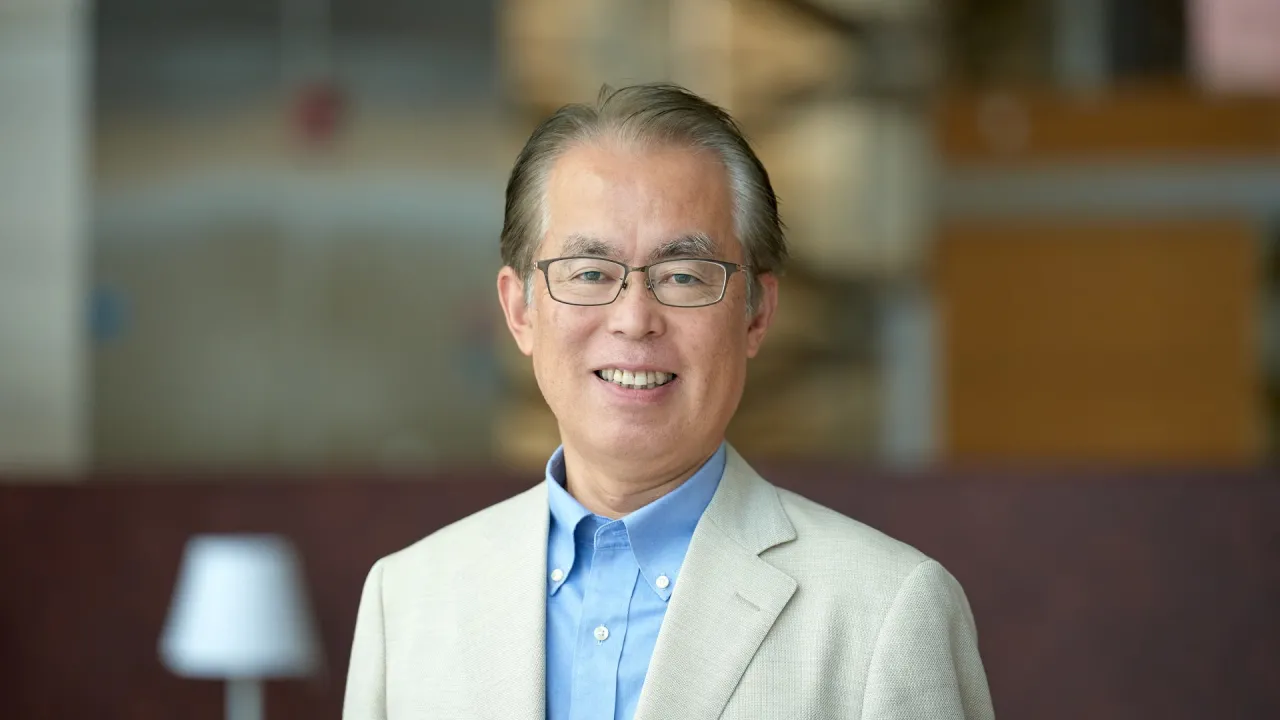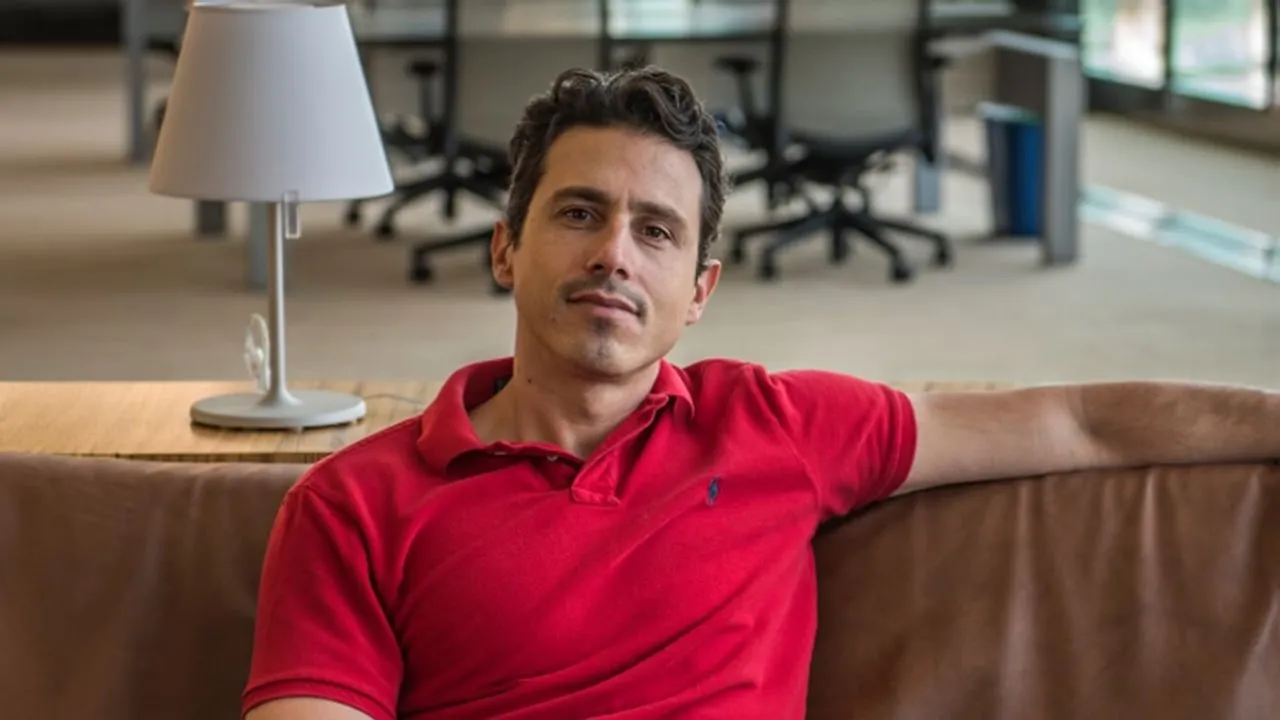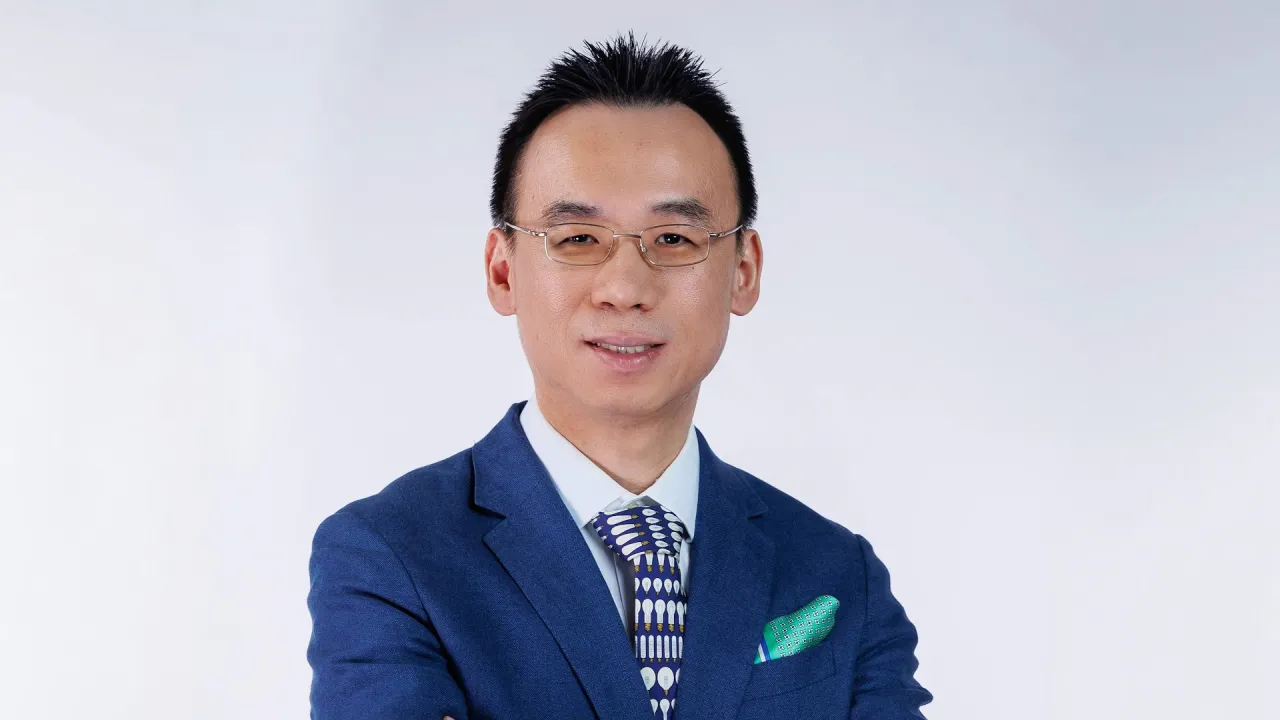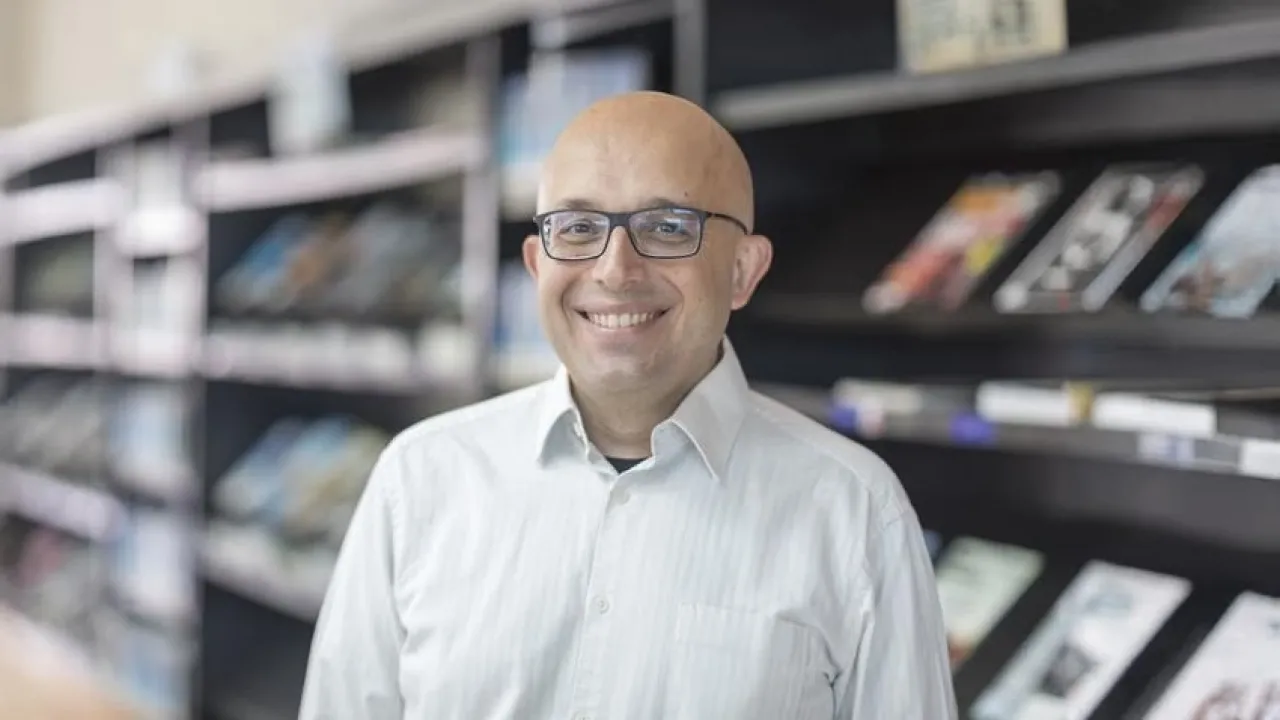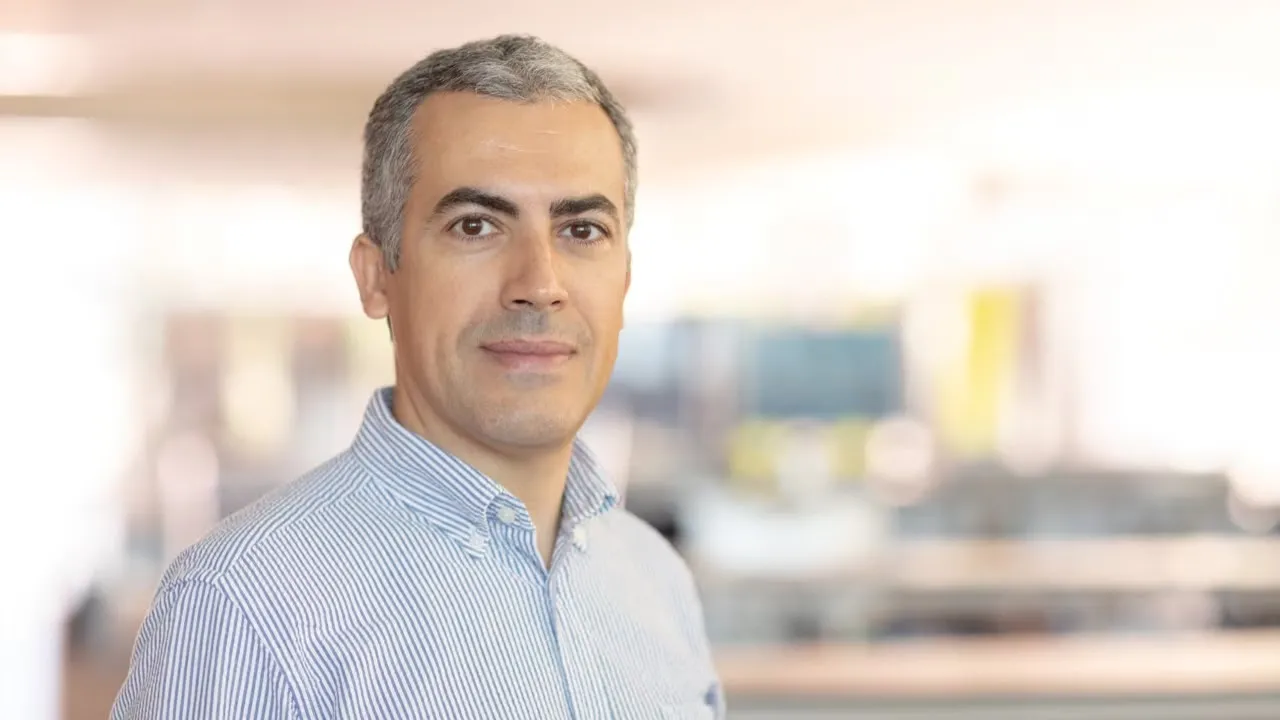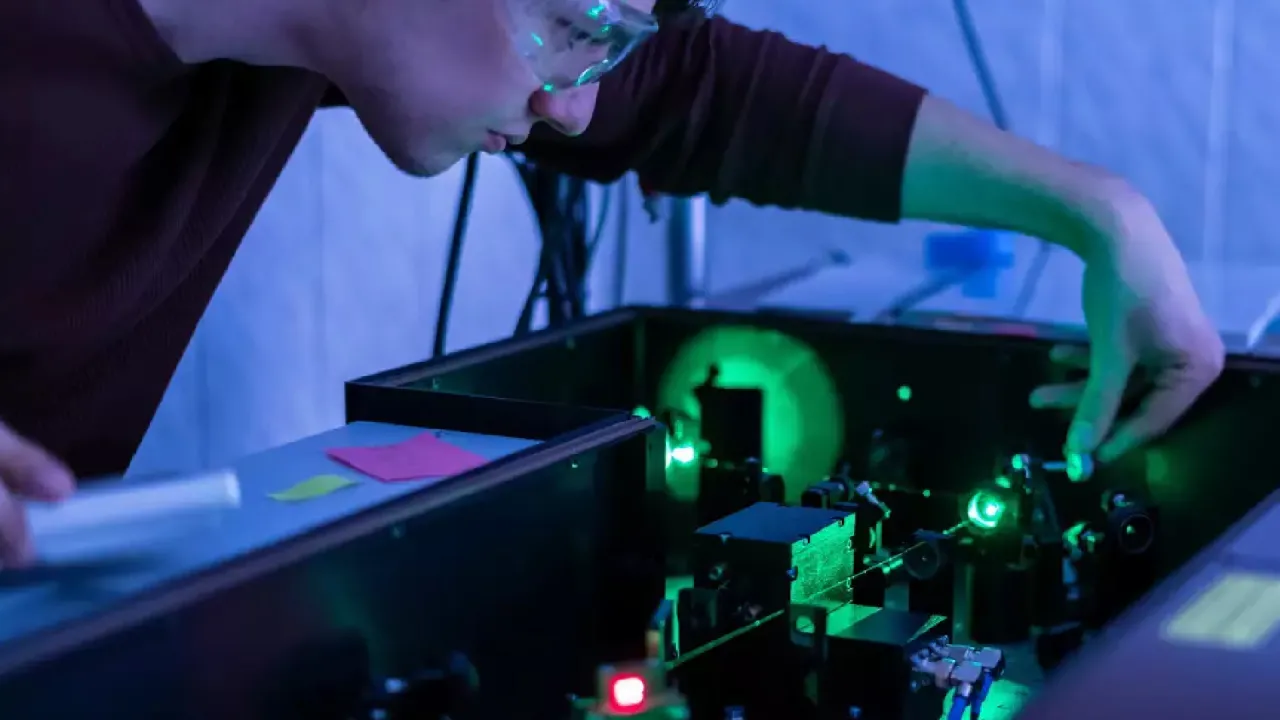
Photonics and Electromagnetics
The ECE program's Photonics and Electromagnetics research area encompasses a broad spectrum of investigations into the interaction of light and electromagnetic waves with matter.
Researchers in this field study the fundamental principles governing these interactions across various frequencies, from radio waves to optical wavelengths. They explore innovative ways to manipulate light at the nanoscale, enabling advancements in high-speed communication, precise sensing and efficient energy harvesting.
Additionally, our researchers employ computational tools to model and optimize complex electromagnetic phenomena, leading to breakthroughs in antenna design and the development of novel metamaterials.
The research in this area also extends to flexible and wearable electronics, focusing on biomedical applications.
Research Focus
- MicroLED: developing ultra-high efficiency and ultra-small microLEDs for next-generation display and lighting technologies.
- UV LEDs and photodetectors: developing high efficiency and high power UV LEDs and photodetectors for a wide range of essential applications, including sterilization, communication, curing, plant growth, fire prevention, medicare and more.
- Nanophotonics and Plasmonics: Investigating light-matter interactions at the nanoscale to develop novel nanostructured materials and devices for applications in nanophotonics, plasmonics and metamaterials.
- Microwave and Millimeter-Wave Photonics: Developing high-speed photonic devices and systems for wireless communications, sensing and radar applications.
- Semiconductor Lasers and Photonic Integrated Circuits (PICs): Designing and fabricating high-performance semiconductor lasers and PICs for optical communications, sensing, and biomedicine applications.
- Light-Matter Interactions and Wave Propagation: Exploring fundamental physics phenomena such as Anderson localization, random lasers, and topological photonics, with potential applications in optical sensing, imaging and energy harvesting.
- Computational Electromagnetics and Nanophotonics: Developing advanced numerical methods and software tools to simulate and analyze electromagnetic wave propagation in complex structures for applications in antenna design, metamaterials and optical devices.
- Flexible and Wearable Electronics: Investigating novel materials, devices and systems for integrating electronics with the human body, focusing on wireless sensing, energy harvesting, and biomedical applications.
Researchers in this area are at the forefront of technological advancements in communications, sensing, imaging, energy and health care.
Related People
Biography
Dr. Yating Wan is an assistant professor of electrical engineering and the principal investigator of the Integrated Photonics Laboratory at KAUST.
Dr. Wan specializes in silicon photonics with a focus on integrating on-chip light sources for data communication, optical computing, OPA-based lidar, and quantum information processing.
Before joining KAUST, Dr. Wan worked in Professor John Bowers’ group at the University of California, Santa Barbara (2017–2022), where she led Intel’s project on heterogeneously integrated QD lasers on silicon.
At KAUST, she leads a dynamic team of 20 members, including seven postdoctoral researchers, 11 Ph.D. students, and two master’s students.
Dr. Wan has authored over 100 peer-reviewed publications, including 38 first-author papers (29 journals, 9 proceedings, and 10 journal covers) and 26 corresponding-author publications (11 journals, 15 conferences).
For her pioneering work in on-chip laser integration on silicon, Dr. Wan has received numerous major awards, including the 2021 CLEO Tingye Li Innovation Prize (one awardee worldwide); the 2022 Rising Stars of Light recognition by Light: Science & Applications (three awardees worldwide); inclusion in MIT Technology Review’s 2023 “35 Innovators Under 35 for China”; the 2025 Sony Women in Technology Award with Nature ($250,000 prize, three awardees worldwide); and the 2025 IEEE Photonics Society Young Investigator Award (one awardee worldwide).
Outside her immediate research focus, Dr. Wan has been an active contributor to the broader academic community. She serves as manager and column editor for the LSA Editorial Office in Thuwal, as associate editor for Applied Optics and the IEEE Journal of Quantum Electronics (JQE), and as guest associate editor for the IEEE Journal of Selected Topics in Quantum Electronics (JSTQE).
Dr. Wan is also a technical program committee member for the International Photonics Conference (IPC) and the Conference on Lasers and Electro-Optics (CLEO) and a member of the IEEE Photonics Society Conference Council. She has reviewed more than 100 papers for leading journals across IEEE, Optica and the Nature Publishing Group.
Research Interests
Dr. Yating Wan’s research focuses on advancing integrated silicon photonics through the development of efficient, scalable, and CMOS-compatible on-chip light sources based on quantum dot (QD) lasers. Her work tackles one of the central challenges in photonic integration—realizing reliable, energy-efficient light generation directly on silicon and emerging material platforms such as silicon carbide and thin-film lithium niobate. By leveraging cutting-edge heterogeneous integration techniques, her group has demonstrated QD lasers with record-low threshold currents, ultranarrow linewidths, and remarkable temperature and feedback stability.
These high-performance QD light sources unlock the full potential of silicon photonics as a universal hardware platform that unites communication, computation, and sensing. Building on this foundation, Dr. Wan’s research explores transformative applications, including photonic computing units (PCUs) for AI acceleration, ultra-efficient optical interconnects for data centers and high-performance computing, silicon photonics-integrated LiDAR for autonomous systems, and chaos-based photonic hardware for next-generation cybersecurity.
Through the seamless integration of materials science, device engineering, and system-level photonic architectures, Dr. Wan’s work bridges the gap between laboratory breakthroughs and industrial-scale deployment. Her vision is to enable an intelligent, energy-sustainable future powered by next-generation AI hardware, high-speed interconnects, and secure optical technologies built on fully integrated QD-on-silicon photonic platforms.
Education
Boon Ooi
- Al-Khawarzmi Distinguished Professor, Electrical and Computer Engineering
Biography
Boon S. Ooi (FNAI, FIEEE, FAPS, FOSA, FSPIE, FInstP) is an Al-Khawarzmi Distinguished Professor of Electrical and Computer Engineering at KAUST. He previously held faculty positions at Nanyang Technological University (Singapore) from 1996 to 2000 and Lehigh University (Pennsylvania, USA) from 2003 to 2009. From 2012 to 2020, he served as the Director of the KACST-Technology Innovation Center at KAUST.
Professor Ooi has trained more than 40 Ph.D. students and 17 postdoctoral fellows, many of whom have secured prestigious fellowships and awards from organizations like the UK Royal Academy, Marie Curie, Humboldt, IEEE, OSA, and SPIE. He holds 45 issued US patents and 21 international patents, many of which have been licensed to leading optics and photonics companies, driving commercialization success.
He has received numerous accolades, including the 2024 Sang Soo Lee Award (Optica/OSA and OSK), the 2023 Khalifa International Award (UAE), and multiple paper awards. Professor Ooi is currently serving as the Editor-in-Chief of IEEE Photonics Technology Letters and has previously held editorial roles with Optics Express and IEEE Photonics Journal.
Beyond his academic achievements, Professor Ooi is actively engaged in professional service, having served on key committees such as the IEEE Fellow Committee and the SPIE Fellow Selection Committee. He chaired the IEEE Photonics Society Distinguished Lecture Selection Committee in 2024.
Research Interests
Professor Ooi’s research focuses on high-speed optoelectronics, optical wireless communications, and distributed fiber optic sensors.
Education
Biography
Kazuhiro Ohkawa is a professor of Electrical and Computer Engineering (ECE) Program and the principal investigator of the Energy Conversion Devices and Materials (ECO Devices) Laboratory at KAUST.
Before joining the University, he was a senior research member at Panasonic Ltd, a professor of Physics at the University of Bremen, Germany and a professor of Applied Physics at Tokyo University of Science, Japan.
Professor Ohkawa invented nitrogen-plasma doping for ZnSe and their blue-green lasers and LEDs. The nitrogen-plasma source is now a standard nitride molecular beam epitaxy (MBE) technology. He later became involved in the metalorganic vapor-phase epitaxy (MOVPE) growth of GaN, where he developed world-record deep-red indium gallium nitride (InGaN) LEDs based on the original MOVPE technique. His nitride MOVPE simulations have contributed to industries worldwide that produce InGaN LEDs, lasers and AlGaN electronics. Additionally, he invented nitride photocatalysts, which are instrumental in solar hydrogen production and artificial photosynthesis.
He has received numerous honors and recognitions for his contributions to optoelectronics, including being named an honorary professor (lifelong) at the University of Bremen, Germany; visiting professor at Mie University, Japan; guest professor at Xiamen University, China; and visiting professor (lifelong) at Tianjin University of Technology and Education, China. He is a fellow of the Japan Society of Applied Physics. Approximately 20 companies have sought his consulting expertise in these research areas.
His research has led to over 200 scientific publications, 28 granted US and Japanese patents and more than 70 invited talks.
Research Interests
Professor Ohkawa’s research at KAUST focuses on applying energy-conversion phenomena towards a more sustainable future. The highly regarded researcher’s contributions to applied physics and optoelectronics have resulted in his technologies being adopted by many companies and institutions worldwide.
Three notable contributions include the first doping technologies for II-VI compounds to realize n- and p-types. Notably, the nitrogen plasma source for the p-type has become the standard technology for molecular-beam epitaxy growth of nitride semiconductors. The second is MOCVD technology for nitride semiconductors. The technology has developed InGaN-based RGB full-color LEDs and made it possible to study MOCVD reactors scientifically. The third is the invention of a nitride photocatalyst for water splitting and artificial photosynthesis.
Ohkawa is also the principal investigator of the ECO Devices Laboratory. The lab’s research topics are not only monolithic RGB micro-LEDs but also applications of those micro-LEDs for high-speed visible light communications (so-called "Li-Fi") and vertical-cavity surface-emitting lasers (VCSELs). RGB VCSELs will enable ultimate laser-based head-mounted displays.
Education
Biography
Andrea Fratalocchi is a full professor in the Computer, Electrical and Mathematical Sciences and Engineering (CEMSE) Division at KAUST. He joined the University in January 2011 as an assistant professor and was promoted to associate professor in 2016. He is one of the founders of the CEMSE Division and the principal investigator of the Primalight Lab.
Before joining KAUST, Fratalocchi was a research fellow at Sapienza University of Rome under a KAUST Fellowship Award. From 2007 to 2009, he was a postdoctoral researcher at Sapienza University under a “New Talent” Award from the Enrico Fermi Research Center. He obtained a Master of Science in Electrical Engineering in 2003 and a Ph.D. in Electrical Engineering in 2007 from the University of Roma Tre, Italy.
Fratalocchi’s career is marked by numerous accolades, including the GCC Enterprise Awards for Best Electrical Engineer of the Year in 2017, the Journal of Optics Outstanding Referee Award in 2017, the Nature Exceptional Referee Award in 2015, and an entry into the Guinness World Records for developing the “Darkest Material Made by Mankind” in 2015.
In 2019, he became a Fellow of the Institute of Physics (IOP), a Senior Member of the IEEE, and a Fellow of the Optical Society of America (OSA).
Fratalocchi has authored over 200 publications, including three books and six patents. He ranks in the top 2% of optics researchers worldwide, based on the standardized citation index compiled by PLOS.
Research Interests
Professor Fratalocchi is dedicated to advancing the field of physics and engineering. His research approach harnesses the potential of complex physical systems, characterized by many degrees of freedom, turning them from theoretical challenges into real-world technological solutions with diverse applications.
His research embraces a nonlinear paradigm, departing from traditional "cause and effect" or linear thinking. This approach finds applications in diverse areas such as chaos theory, rare events, brain functions, natural mimicry and camouflage, swarm's cooperative dynamics and intelligence.
Using disorder as a building block, he proposes novel, low-cost, scalable technologies that outperform current systems by several orders of magnitude.
As part of his engineering research, he has developed world-record-performing nanomaterials for concentrating solar power, steam generation, desalination, solar water splitting, solar and chemical fuel production for carbon-negative technologies, artificial intelligence optical neural networks for hyperspectral imaging and sensing, and machine-learning nanomaterials for wave control and bioimaging, including early disease detection of cancer and diabetes.
Education
Biography
Professor Xiaohang Li has extensive research experience in III-nitride and III-oxide (ultra)wide bandgap semiconductors. Prior to KAUST, Li received his Bachelor degree in Applied Physics from Huazhong University of Science and Technology, China, his Master's degree in Electrical Engineering from Lehigh University, U.S., and his Ph.D. degree in Electrical Engineering from Georgia Institute of Technology, U.S.
Since joining KAUST, Li has advised more than 100 students, and led his Advanced Semiconductor Laboratory (ASL) in making many important and pioneering contributions to semiconductor research. Prof Li and his ASL team focus on the fundamental and applied research of ultrawide and wide-bandgap semiconductor materials, devices, physics and hardware. The ASL team aims to leverage these technologies to revolutionize the energy, communications, and health industries crucial for the sustainability of human society.
Research Interests
Professor Li has extensive research experience in III-nitride and III-oxide (ultra)wide bandgap semiconductors. He focuses his interdisciplinary research activities on investigating the growth, simulation, fabrication and characterization of III-nitride structures for next-generation devices. Devices of particular interest include LEDs, lasers, transistors and next-generation CMOS ICs.
Education
Biography
Professor Hakan Bagci is the Associate Dean for Students at the CEMSE Division and a faculty member in the Electrical and Computer Engineering (ECE) program at KAUST. He specializes in computational electromagnetics, focusing on time-domain integral equations, hybrid methods, and numerical solvers for complex electromagnetic interactions, with applications in photonic, optical, and electronic systems.
Professor Hakan Bagci received his Bachelor's in Electrical and Electronics Engineering ('01) from Bilkent University, Turkey. He obtained his Master's and Ph.D. degrees in Electrical and Computer Engineering at the University of Illinois at Urbana-Champaign (UIUC), U.S., in 2003 and 2007, respectively.
From 2001 to 2006, Bagci was a research assistant with the UIUC Center for Computational Electromagnetics and Electromagnetics Laboratory, U.S. From 2007 to 2009, he was a postdoctoral research fellow at the University of Michigan's Radiation Laboratory, U.S.
Bagci arrived at KAUST in August 2009 as an Assistant Professor of Electrical Engineering. He was promoted to Associate Professor in the same program six years later.
In 2021, he was elevated as an Applied Computational Electromagnetics Society (ACES) Fellow for his "exceptional achievements in computational electromagnetics, including ACES publications, and extensive service to ACES." He is a Senior Member of the International Union of Radio Science (URSI) for his research achievements in the field of computational electromagnetics.
He is an Associate Editor for IEEE Antennas and Propagation Magazine (2019 to present), Associate Editor for IEEE Journal of Multiscale and Multiphysics Computational Techniques (2018 to present), and Associate Editor for IEEE Transactions on Antennas and Propagation (2017 to present).
Research Interests
Professor Bagci’s research focuses on theoretical and applied aspects of the interdisciplinary field of computational electromagnetics (CEM). CEM fuses elements of electrical engineering, physics, applied mathematics and computational sciences to enable the numerical design and characterization of real-life electromagnetic, optical and photonic devices and systems.
The field of CEM complements and facilitates advances in other fields of electromagnetics, optics and photonics.
Bagci’s CEM research group is developing novel, efficient, accurate algorithms and numerical schemes for solving integral/differential forms of Maxwell equations—a set of four complicated equations that describe the world of electromagnetics.
Education
Biography
Atif Shamim received his M.S. and Ph.D. degrees in electrical engineering from Carleton University, Canada, in 2004 and 2009, respectively. He was an NSERC Alexander Graham Bell Graduate Scholar at Carleton University from 2007 to 2009 and an NSERC Postdoctoral Fellow from 2009 to 2010 at the Royal Military College Canada and KAUST.
In 2006, he joined the VTT Micro-Modules Research Center (Oulu, Finland) as an invited researcher. In August 2010, he joined the Electrical and Computer Engineering (ECE) Program at KAUST, where he is currently a full professor, chair of the ECE Program, and principal investigator of the IMPACTS Lab.
His research work has earned numerous awards, including Best Paper Awards at IEEE ICMAC 2021, IEEE IMS 2016, IEEE MECAP 2016, and IEEE EuWiT 2008. He also received first prize in the IEEE IMS 2019 3MT Competition, the IEEE AP-S Design Competition 2022, and second prize in the IEEE IMS Design Competition 2024. Additionally, he was recognized with finalist or honorable mention awards in several prestigious competitions, including the IEEE AP-S Design Competition 2020 and the R.W.P. King Prize for journal papers in IEEE TAP 2017 and 2020. He has been selected as a Distinguished Lecturer for IEEE AP-S (2022–2024).
In addition to his research accolades, Professor Shamim’s work has been recognized for its broader impact across innovation, industry and entrepreneurship. He received the King’s Prize for the Best Innovation of the Year (2018) for his work on sensors for the oil industry. In 2008, he was honored with the Ottawa Centre of Research Innovation (OCRI) Researcher of the Year Award in Canada. His innovative Wireless Dosimeter earned the ITAC SMC Award at the Canadian Microelectronics Corporation TEXPO in 2007. He has also won several business-related honors, including first prize in Canada’s National Business Plan Competition and the OCRI Entrepreneur of the Year Award in 2010.
Professor Shamim has been actively involved in contributing to the IEEE community through various technical, editorial, and leadership roles. He is a Fellow of IEEE and founded the first IEEE AP/MTT chapter in Saudi Arabia (2013). He served on the editorial board of IEEE Transactions on Antennas and Propagation (2013–2019), as a Guest Editor for an IEEE AWPL Special Issue (2019), and as an Associate Editor for the IEEE Journal of Electromagnetics, RF and Microwaves in Medicine and Biology (2020–2024). He has also participated in several IEEE Technical Committees, including those on Antenna Measurements (AP-S), Microwave Controls (MTT-S 13), and Additive Manufacturing (CRFID).
He currently chairs the IEEE AP-S Technical Committee on Wireless Communication and serves as Vice Chair of the IEEE AP-S MGA Committee.
Research Interests
Professor Shamim's research focuses on innovative antenna designs and their integration strategies with circuits and sensors for flexible and wearable wireless sensing systems through a combination of CMOS and additive manufacturing technologies. Shamim is particularly interested in developing wearable wireless sensor systems to measure physiological parameters in real time.
Specific research interests include:
- Antenna-on-Chip (AoC) design, integration and efficiency enhancement strategies
- Reconfigurable Intelligent Surfaces (RIS)
Additive manufacturing (Inkjet, Screen, and 3D printing) - Wearable and disposable wireless sensors realized through printing technologies
- Mechanically flexible RF electronics and sensing systems
- Reconfigurable microwave components (magnetically controlled)
- Phase Change Materials (PCM) for low cost RF and mm-Wave switching applications
- Terahertz plasmonics antennas and their characterization techniques
Education
Biography
Ying Wu is an Associate Professor of Applied Mathematics and Computational Science (AMCS) and the principal investigator of the Waves in Complex Media Research Group.
Professor Wu obtained her Ph.D. in Physics in 2008 from the Hong Kong University of Science and Technology (HKUST), which was followed by a two-year postdoctoral fellowship. She received her B.S. in Physics from Nanjing University, China, in 2002.
Wu is a dedicated physicist who studies electromagnetic, acoustic and elastic waves. Her work has advanced theoretical and design knowledge of metamaterials, photonic and phononic crystals and waves in random media.
Research Interests
Among Professor Wu’s research interests are computational physics with a focus on wave propagation in heterogeneous media, electromagnetic, acoustic and elastic metamaterials, effective medium theory, transport theory and time-reversal imaging. Furthermore, she implements fast algorithms for solving large-scale, classical wave propagation problems.
Education
Carlo Liberale
- Research Associate Professor, Bioscience
